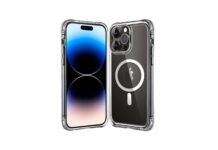As time goes by, standards improve and features change, but the basics of a good TV remain the same. You want inky black levels, brilliant colors, excellent processing, and a fast, intuitive smart interface. Lucky for you, we’ve spent years testing hundreds of the most popular TVs on the market, so we know how to shop for one.
All things considered, the best TV for most people is the LG C2
(available at Amazon for $1,196.99)
. This LG OLED features stunning contrast, 4K resolution, Dolby Vision support, and LG’s webOS smart platform. Its cutting-edge gaming support makes it a top pick for gamers, as well. If you don’t want to shell out that kind of cash, don’t worry: We’ve got great TV picks for every budget.
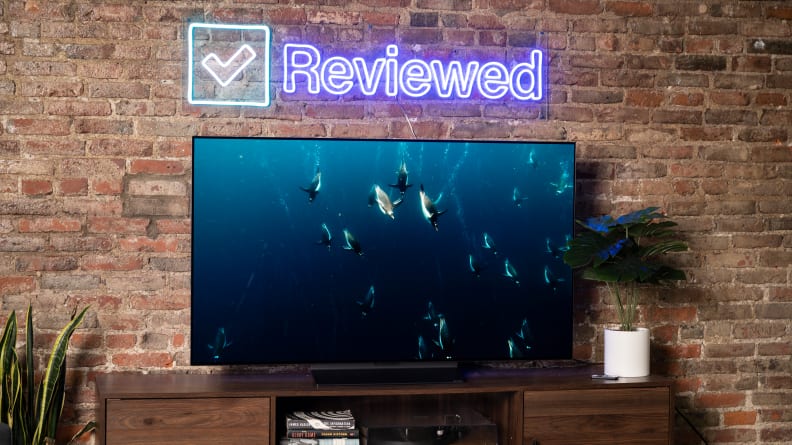
Credit:
Reviewed / Betsey Goldwasser

The LG C2 combines the unbelievable performance of an OLED with an array of exciting features.
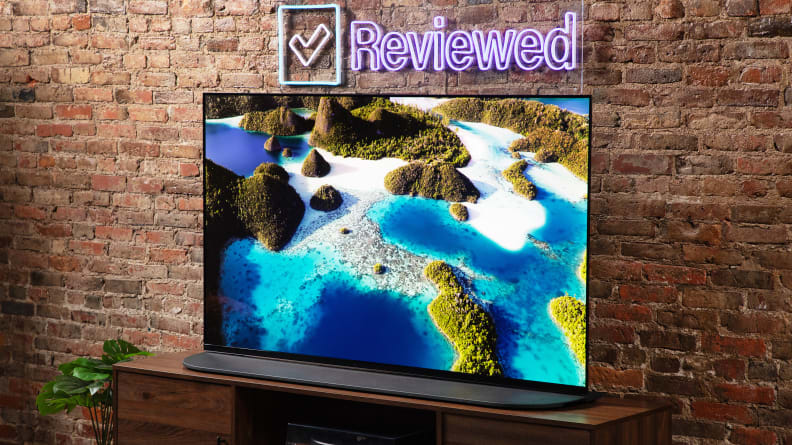
Credit:
Reviewed / Tim Renzi

The A95K is the best TV we’ve ever seen.
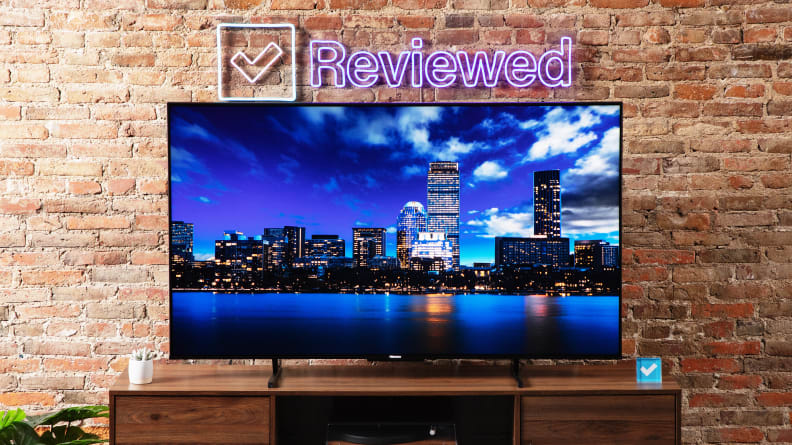
Credit:
Reviewed / Tim Renzi

The Hisense U8K offers great performance for a price most people can justify.
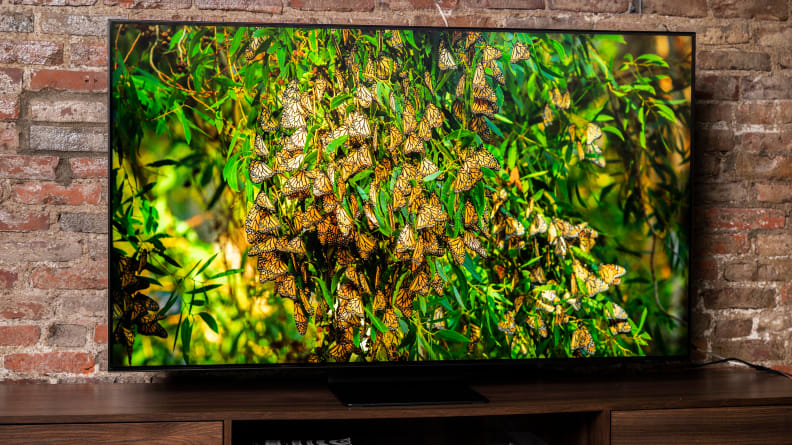
Credit:
Reviewed / Betsey Goldwasser

The Samsung QN90B is one of the brightest LED TVs we’ve reviewed this year.
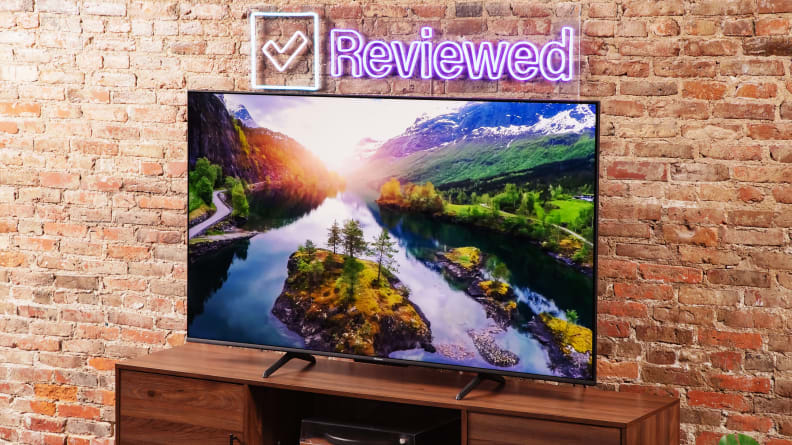
Credit:
Reviewed / Timothy Renzi

Thanks to mini-LED display technology, the Hisense U6K delivers excellent performance for a budget TV.
Other Top TVs We Tested
How We Test TVs
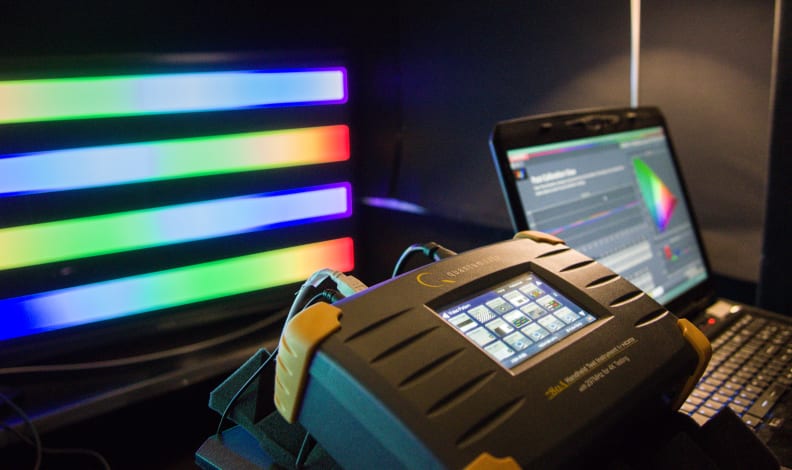
Credit:
Reviewed
Our lab is outfitted with much of the same equipment you would find at a factory that manufactures and calibrates televisions.
The Testers
Reviewed has been testing TVs for over a decade. Our current Home Theater expert, Michael Desjardin, is a Senior Staff Writer who’s been with Reviewed since 2014. A film enthusiast and TV expert, he takes picture quality seriously, but also understands that not every TV is a good fit for everyone.
John Higgins is Reviewed’s A/V and Electronics Senior Editor. In his A/V career that has spanned two decades he has written about TVs, speakers, headphones, AVRs, gaming, and all manner of technology. He is also an ISF Level III-certified calibrator.

Credit:
Reviewed / Chris Snow
We measure things like peak brightness, black level, hue, and so on.
The Tests
We’re serious about TV testing, so much so that our Cambridge, Massachusetts laboratory has much of the same equipment factories use to manufacture and calibrate televisions.
Our hardware includes a SpectraCal C6 colorimeter and a LS-100 luminance meter. We have a Leo Bodnar input lag tester, and a Murideo Seven 8K signal generator for testing 8K TV features. We also have more Blu-rays than we can keep track of.
For software, we use Portrait Displays’ Calman Ultimate color calibration software. It’s the industry standard for display measurement and screen calibration.
Our testing process has been honed over many years. We gather enough esoteric data to satisfy curious video engineers, while also focusing on the average person’s viewing experience.
We measure factors like peak brightness and black level. We test hue and saturation for primary and secondary digital colors. We check the accuracy of the TV’s electro-optical transfer function—you get the idea.
We weigh our performance tests based on how the human eye prioritizes vision. Since human visual systems process brightness better than color, we weigh brightness first, then move on to colorimetry, and so on.
Beyond the technical tests, we also spend a lot of time just using each TV. We stream video, connect a Blu-ray player to watch movies, and use the smart features. We also check out the ports, remote, and on-set buttons. We evaluate anything and everything that might be relevant to the daily experience of using the TV.
How to Buy the Best TV
Finding the best TV for you can be an intimidating process. Reading current TV reviews can help you learn about specific models. Still, it’s easy to get lost in all the technical terms and features, so here’s a quick look at some important considerations as you decide on your next TV.
What is Resolution?
Resolution refers to how many pixels comprise the screen. All the models on our Best TV list are 4K TVs. They have 3,840 pixels across and 2,160 pixels down, for a total of almost 8.3 million pixels. UHD stands for Ultra High Definition, and specifies resolution plus a whole host of other parameters including Wide Color Gamut and frame rate.
While there are 8K TVs on the market, we don’t recommend them…yet. There’s virtually no content and the minimal performance increase doesn’t justify the exorbitant cost.
Different Display Types
There are two main display technologies with current TVs—LED/LCD and OLED. LED/LCD refers to Light Emitting Diodes and Liquid Crystal Display. The LEDs are the light source, or backlight, for the TV. They send light through a color filter and then the LCD layer before it hits our eyes.
The LED backlights use a process called local dimming, where zones of LEDs dim or boost brightness depending on what’s on the screen. This vastly improves contrast if it’s done well.
The LCD layer reacts to electrical current passing through it, causing the liquid crystals to twist and control the amount of light that passes through. LCD TVs use either VA or IPS panels, which each have their own benefits and drawbacks.
OLED (Organic Light Emitting Diode) TV technology might sound similar to LED, but the name is where the similarities end. OLED is an emissive technology, meaning the pixels create their own light so a separate backlight isn’t necessary.
Instead of dimming zones individual pixels can dim or turn off. This allows OLED TVs to achieve deep blacks and an infinite contrast ratio—an enormous advantage over LEDs. Past OLEDs have been plagued by the threat of burn-in (or image retention), where the impression of an image stays on the screen, but that’s not a concern with current TVs for consumers.
Both display technologies can be paired with quantum dots. These are microscopic nanocrystals that produce colored light when illuminated. They can greatly increase the light output and color range of a television.
LED TVs have featured quantum dots for a few years (called QLED, QNED, or Triluminos by Samsung, LG, and Sony respectively). But now we’re seeing them in OLED panels (QD-OLED TVs), as well.
What is HDR?
High Dynamic Range (HDR) refers to both a type of TV and a type of content. HDR expands the potential range of both luminance (brightness) and color that a TV can produce.
There are four different HDR formats—Dolby Vision, HDR10+, HDR10, and HLG. All of our best TVs are HDR-compatible and support at least HDR10, with some supporting all four.
Which HDMI Connection Do You Need?
The predominant connection on TVs is HDMI, but you might have seen there’s both HDMI 2.0 and HDMI 2.1 out there. The biggest difference between the two is an increase in data bandwidth (18Gbps on HDMI 2.0 vs up to 48Gbps on HDMI 2.1).
For most people, HDMI 2.0 is sufficient, but if you want to get 4K resolution at refresh rates higher than 60Hz on the Xbox Series X or PS5, you’ll need at TV with at least one HDMI 2.1 port. Just make sure your HDMI cable is capable of that increased bandwidth as well.
The higher bandwidth of HDMI 2.1 also allows for eARC, which stands for “enhanced audio return channel”. This tech sends high-bitrate audio (such as Dolby Atmos) from the TV to an AV Receiver or soundbar, pumping up the audio experience far beyond the built-in TV speakers.
Smart Platforms
How you interact with your TV, and how easy or frustrating it is, comes down to the smart platform. This is where you’ll find streaming apps like Netflix, Disney+, and Amazon Prime Video, as well as the TV’s input selection and setup menus.
Some TV brands, like LG and Samsung, use homegrown platforms, while others rely on Roku or Google to supply the OS. We’ve been fans of Roku for years and it’s still the best OS available, although others have made strides to close the gap.
If you’re not a fan of your TV’s built-in OS, you can always buy an external streaming device or use a gaming console instead.
What About Gaming Features?
In addition to looking for HDMI 2.1, there are some gaming-specific TV features to look out for, like Variable Refresh Rate (VRR) and Auto Low Latency Mode (ALLM).
Variable Refresh Rate comes in different varieties, so you might see this called FreeSync or G-Sync, as well. This technology syncs the refresh rates of the TV and game console to prevent unwanted artifacts like screen tearing that can be distracting while gaming. Some TVs also have special gaming hub interfaces that display all the gaming features the TV offers at once.
Some models, such as Samsung TVs with Gaming Hub—don’t even need a console to play. Instead they include cloud gaming services that allow you to stream games as you play them, as long as your internet speeds are fast enough.
What Size TV is Best?
Our recommendation will always be “the bigger the better,” as larger TVs offer a more immersive experience. For optimal movie viewing, your sitting distance should be no further than 1.2 times the diagonal size of the TV (so 5.5 feet back from a 55-inch TV). Sitting too close can cause eye fatigue. It can also make you notice individual pixels at lower resolutions, but with 4K it isn’t a huge issue.
What Is A TV Series?
You may notice the TVs listed in this roundup don’t follow the traditional naming convention you might see when shopping. That’s because we don’t nominate a single TV. Instead, we nominate the entire range of sizes within a “series.”
Typically a TV series is the same model, in different sizes. While the price and dimensions differ, the performance is usually identical, with occasional small differences in things like dimming zones on LED TVs. We focus on the series because it’s also the most accurate, useful way to discuss televisions, and lets you consider your needs regardless of your room size.





